Cellular Neuroscience
2025-09-16
Department of Psychology
Prelude
– Neural Academy (2020)
Today’s topics
- Warm-up
- Cells of the nervous system
- Neurophysiology I
Warm-up
A dermatome is…
- A. A receptor in the skin that signals itch.
- B. A member of an 80’s punk band.
- C. A sensory region of the frontal cortex.
- D. A region of the skin innervated by a spinal nerve.
A dermatome is…
A. A receptor in the skin that signals itch.B. A member of an 80’s punk band.C. A sensory region of the frontal cortex.- D. A region of the skin innervated by a spinal nerve.
The spinal cord contains separate zones of gray and white matter.
- A. True
- B. False
The spinal cord contains separate zones of gray and white matter.
- A. True
B. False
This branch of the autonomic nervous system is activated after you eat a big meal.
- A. The somatic division of the CNS.
- B. The parasympathetic branch of the ANS.
- C. The sympathetic branch of the ANS.
- D. The olfactory nerve (I).
This branch of the autonomic nervous system is activated after you eat a big meal.
A. The somatic division of the CNS.- B. The parasympathetic branch of the ANS.
C. The sympathetic branch of the ANS.D. The olfactory nerve (I).
Cells of the nervous system
By the numbers…
Human vs. non-human cells
- ~ 37 trillion (10^9) cells (Roy & Conroy, 2018)
- 10-100 trillion non-human cells (gut, skin/hair, bloodstream, etc.)
- Human bodies are a community
How many neurons and glia?
- Old “lore”: ~100 billion (10^6) neurons
- New estimate (Azevedo et al., 2009)
- ~86 +/- 8 billion neurons
- ~85 +/- 9 billion glia
- 100-500 trillion synapses, 1 billion/mm^3
Tip
How long would it take you to count 170 billion cells?
How would you estimate how long?
- 60 s/min x 60 min/hr x 24 hrs/day x 365 days/ yr = 31,536,000 s/yr
- 1.7e11/31,536,000 = 5,390 years
“Back of the envelope” calculations/guess-timates are extremely useful–in science and in other aspects of life.
Quantifying the brain

Figure 2 from Azevedo et al. (2009)
Quantifying the brain

Non-neurons: Mass vs. number of cells
Quantifying the brain

Neurons: Mass vs. number of cells
Quantifying the brain
- # of glial cells scales with brain size/mass
- # of neurons doesn’t scale with brain size/mass
- cerebellum small but # of neurons large
Quantifying the brain
Glia (neuroglia)
- “Glia” means glue
- Functions
- Structural support
- Metabolic support
- Brain development
- Neural plasticity?
- Multiple types
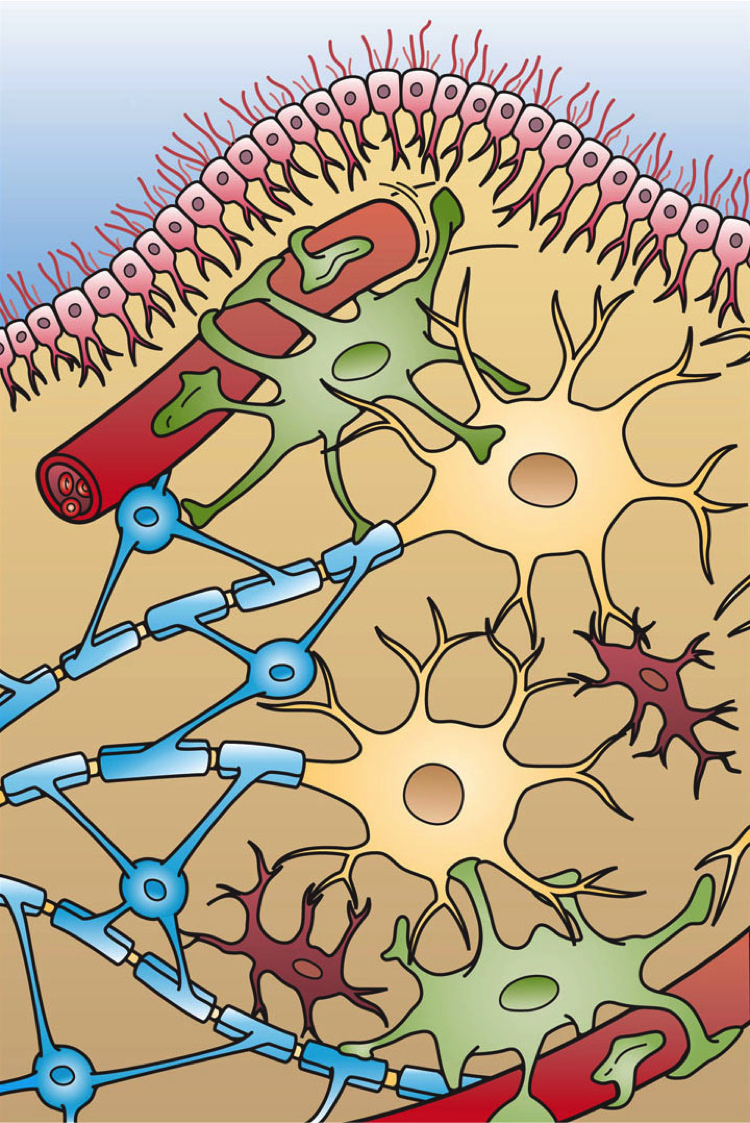
Astrocytes
- “Star-shaped”
- Physical and metabolic support

Astrocytes
- Regulate concentration of key ions (Ca++/K+) for neural communication
- Regulate concentration of key neurotransmitters (e.g., glutamate)
- Shape brain development, synaptic plasticity
- Regulate local blood flow
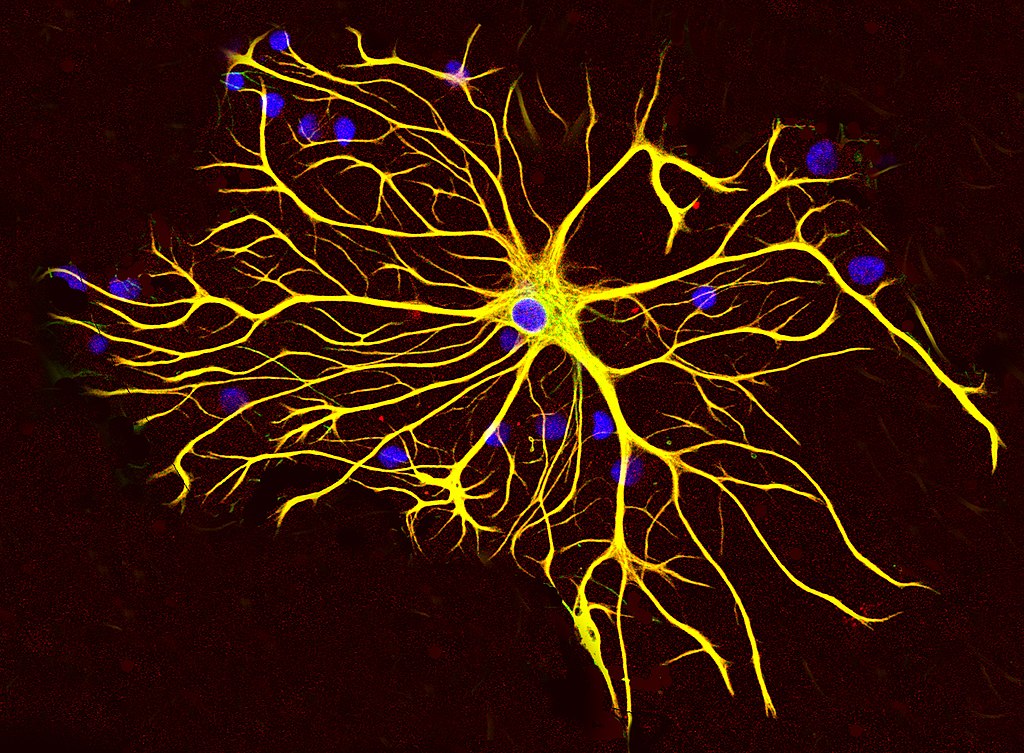
Astrocytes
- Regulate/influence communication between neurons (Bazargani & Attwell, 2016)
- Disruption linked to cognitive impairment, disease (Chung, Welsh, Barres, & Stevens, 2015)

Astrocytes
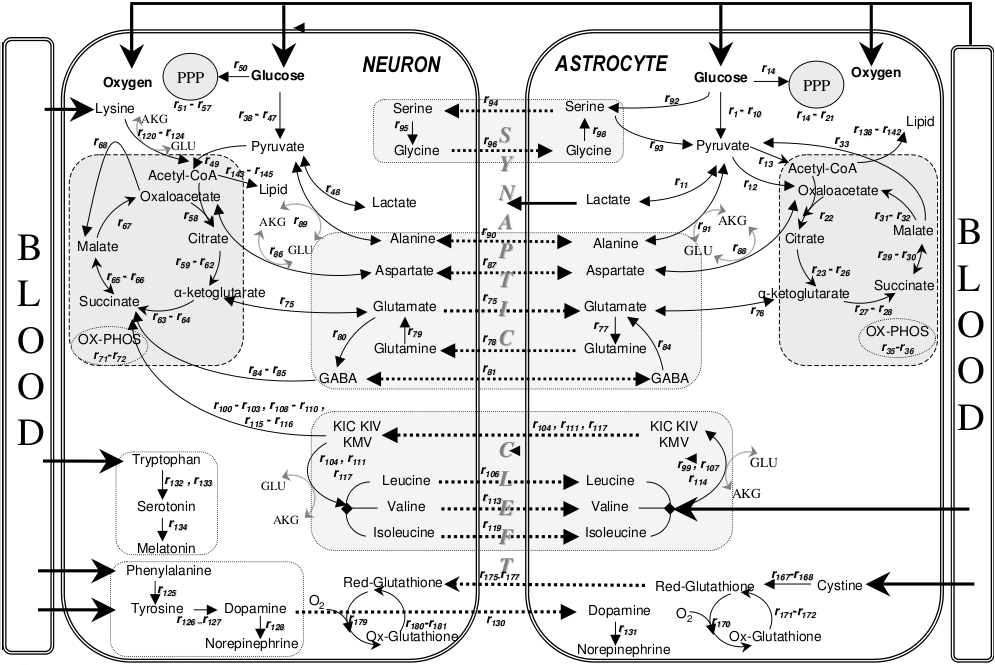
https://en.wikipedia.org/wiki/Astrocyte
Myelinating cells
- Produce myelin or myelin sheath
- White, fatty substance
- Surrounds many neurons
- The “white” in white matter

Myelinating cells
- Provide electrical/chemical insulation
- Make neuronal messages faster, less susceptible to noise

Oligodendrocytes
- In brain and spinal cord (Central Nervous System or CNS)
- 1:many neurons
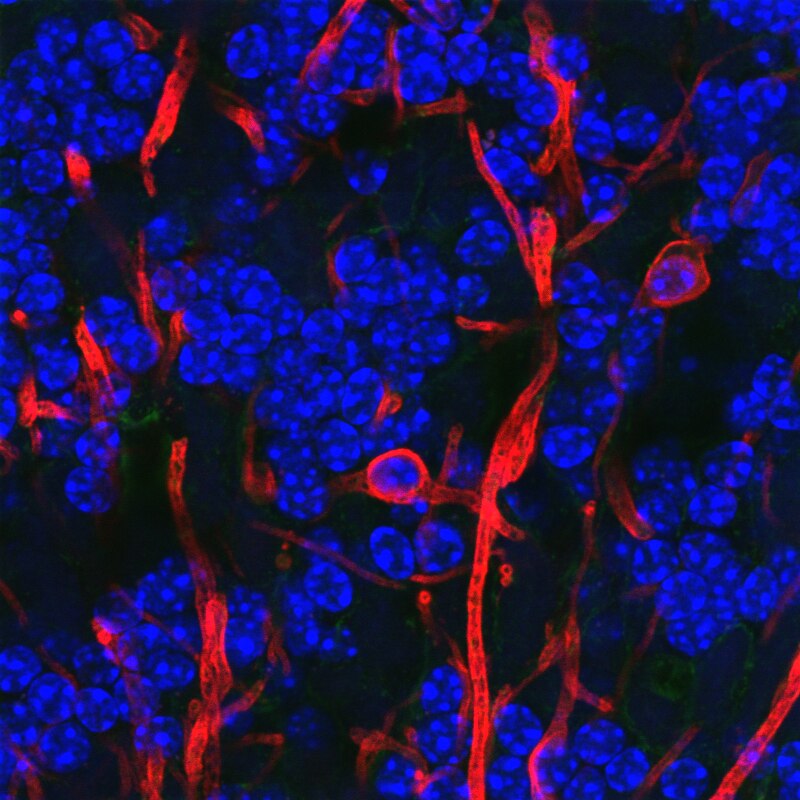
Schwann cells
- In Peripheral Nervous System (PNS)
- 1:1 neuron
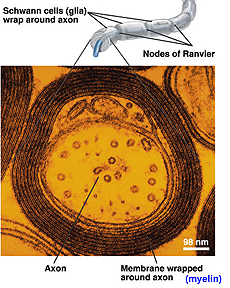
Schwann cells
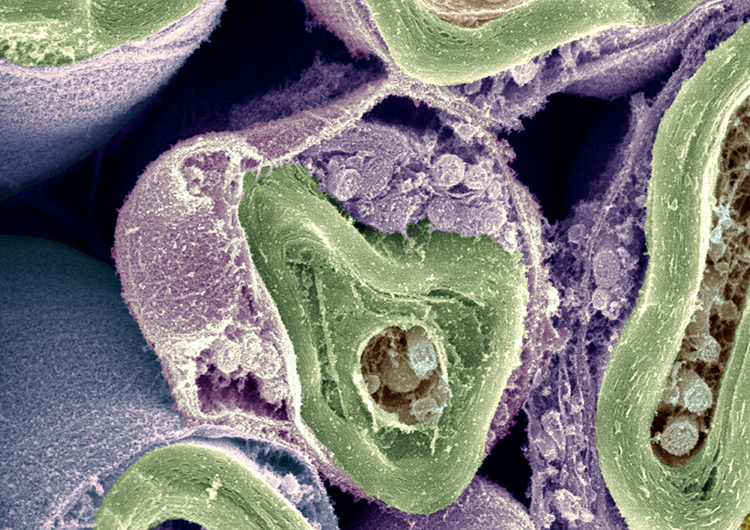
https://www.brainfacts.org/brain-anatomy-and-function/cells-and-circuits/2018/schwann-cells-keep-signals-strong-012918
TV-show-inspired mnemonic

Central Oligodendrocytes Peripheral Schwann cells
TV-show-inspired mnemonic

Schwann cells Peripheral Oligodendrocytes Central
Microglia
- Clean-up damaged, dead tissue
- Prune synapses in normal development and disease
- Disruptions -> impaired connectivity and social behavior (Zhan et al., 2014)

Neurons

Figure 1: Neurons in mouse hippocampus: http://www.extremetech.com/wp-content/uploads/2012/03/a-mouse-hippocampus-640x353.jpg
Fun facts about neurons
- Specialized for electrical & chemical communication
- Post-mitotic – don’t divide
- Most born early in life, (Bhardwaj et al., 2006)
- Among longest-lived cells in body, may scale with organism lifespan (Magrassi, Leto, & Rossi, 2013)
- Can extend over long distances
Macrostructure of neurons
Dendrites
- Branch-like “extrusions” from cell body
- Majority of input to neuron
- Cluster close to cell body/soma
- Usually receive info
- Passive (do not regenerate electrical signal) vs. active (regenerate signal)

Dendrites
- Dendritic Spines (protrusions from dendrites)

Dendrites
- “Polarized” or directional information flow (to soma)
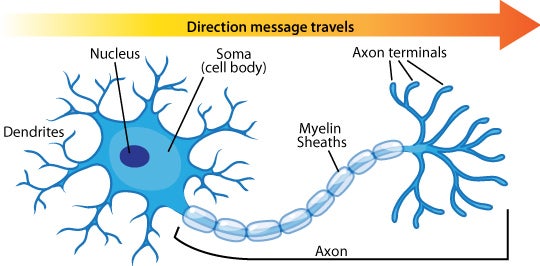
Soma (cell body)
- Varied shapes
- Nucleus
- Chromosomes (genetic material)
- Organelles
- Mitochondria
- Smooth and Rough Endoplasmic reticulum (ER)

Axons
- Another branch-like “extrusion” from soma
- Extend farther than dendrites
- Usually transmit info

Axons
- Parts
- Axon hillock (closest to soma, unmyelinated)
- Nodes of Ranvier (unmyelinated segments along axon)
- Axon terminals, terminal buttons, synaptic boutons

Synaptic bouton (terminal button)
- Synapse (~5-10K per neuron)
- Presynaptic membrane (sending cell) and postsynaptic (receiving cell) membrane
- Synaptic cleft – space between cells
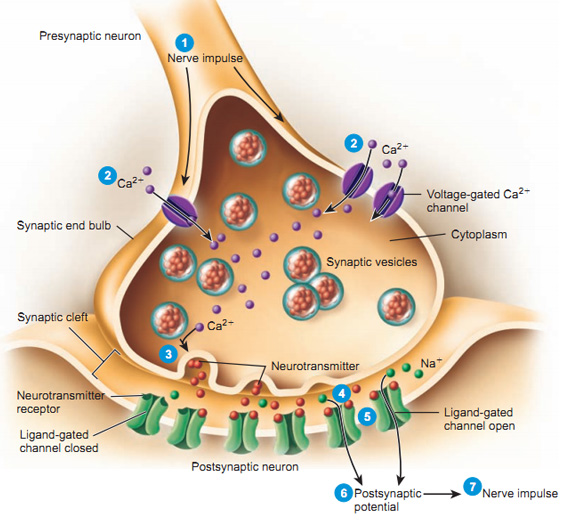
Synaptic bouton (terminal button)
- Synaptic vesicles
- Pouches of neurotransmitters
- Release contents into synaptic cleft
- autoreceptors (detect NTs)
- transporters (transport NTs across membrane)
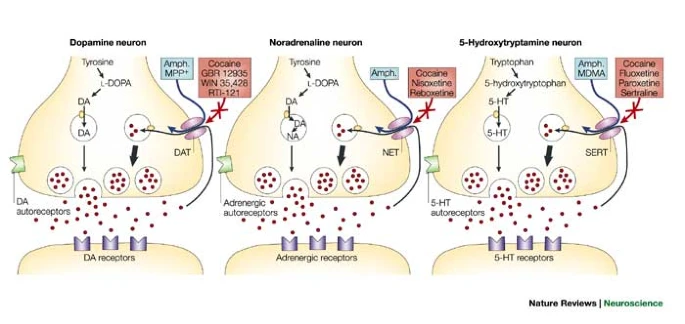
Classifying neurons
- Functional role
- Input (sensory), output (motor/secretory), interneurons
- Anatomy of axons
- Unipolar
- Bipolar
- Multipolar
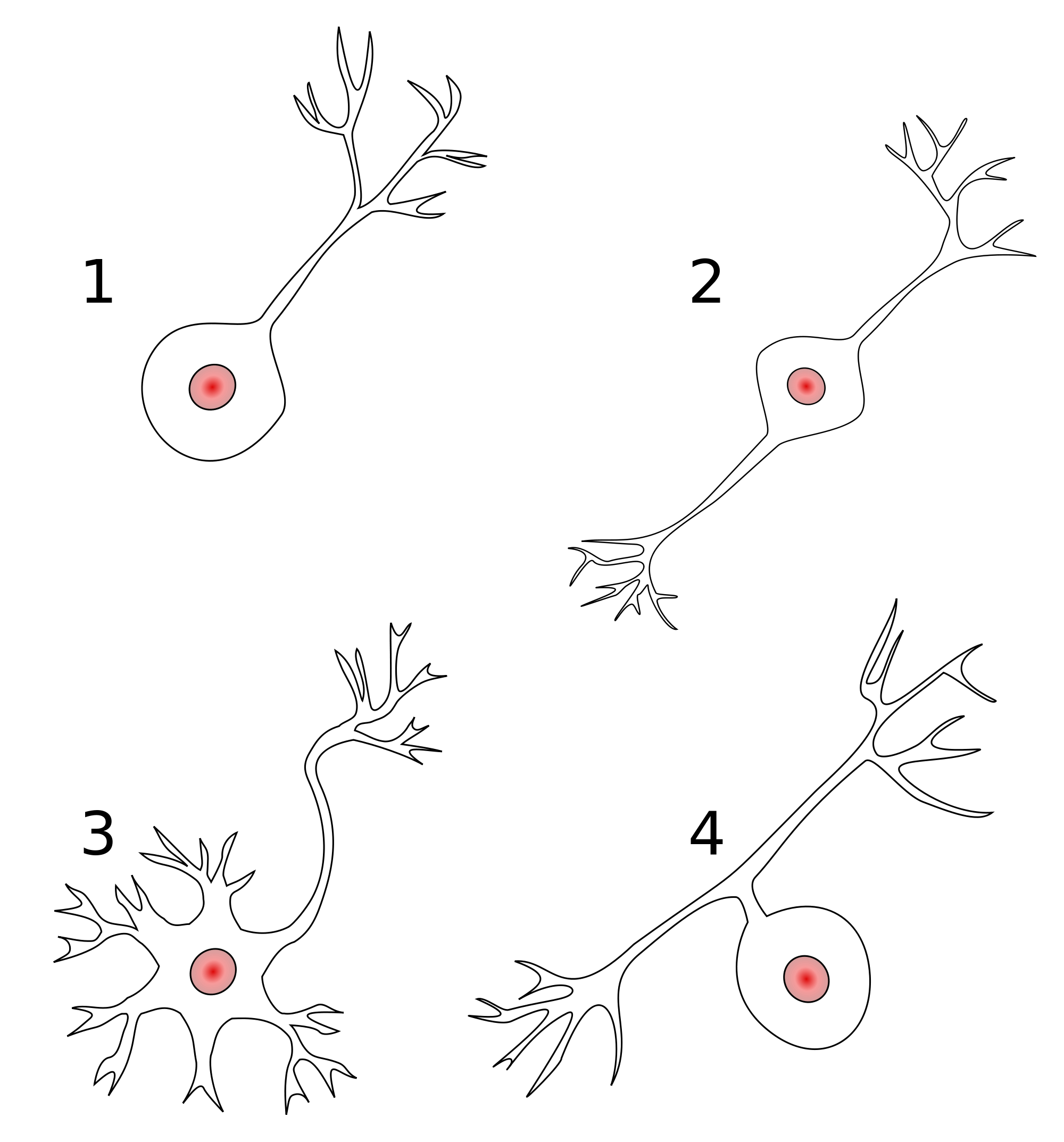
Classifying neurons
- By specific anatomy
- Pyramidal cells
- Stellate cells
- Purkinje cells
- Granule cells
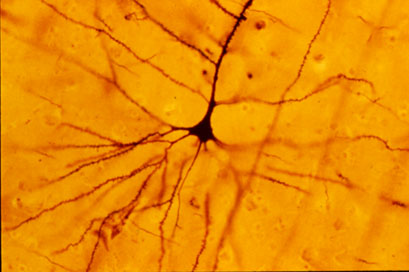
Classifying neurons
Pyramidal cell (left) | Stellate cell (right) from Wikipedia
Neurophysiology I
Or how do neurons communicate?
Two communication ‘modes’
- Electrical
- Membrane potential (voltage) changes
- Chemical
- Neurotransmitter or hormone release
Electrical potential
- Potential \(\rightarrow\) voltage
- Voltage \(\approx\) pressure
- Measure with
- electrodes
- Reference: outside
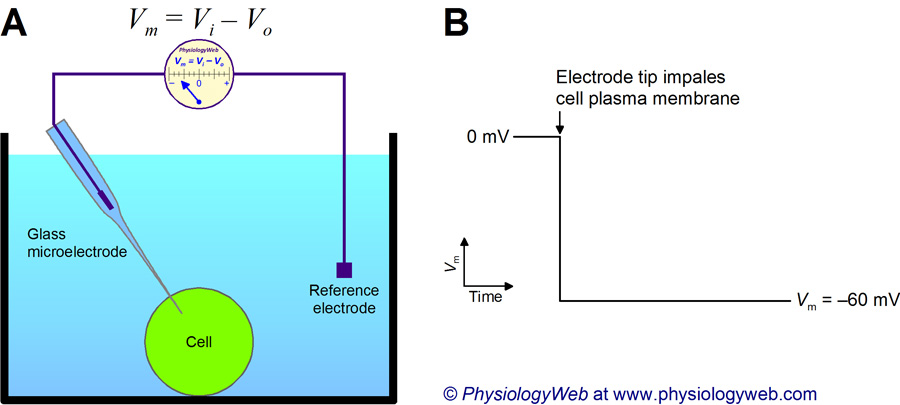
Electrical potential
- Potential energy
- Energy that could be released
- If circumstances change
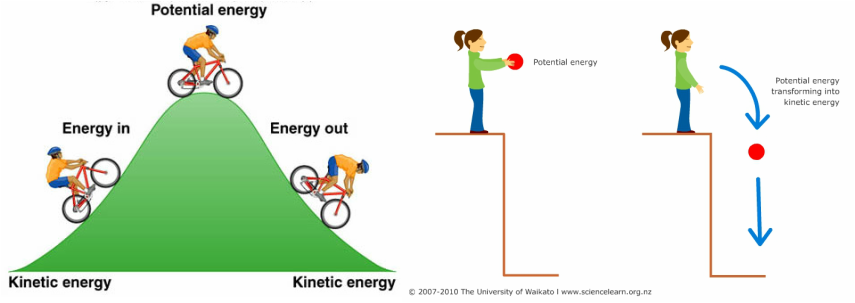
Neurons have electrical potential
- Resting potential
- Voltage across neuronal membrane when cell is ‘at-rest’ (not firing)
- Action potential
- Voltage across neuronal membrane when cell is active or firing
Neuron as a dynamical system
- In a (temporarily stable) equilibrium
- Not really at “rest”
- Influenced by multiple forces
- Forces balance-out (for now)
Metaphor I

Metaphor II
- Annie/Alex (\(A^-\)) was having a party.
- Used to date Nate/Natalie (\(Na^+\)), but now sees Karl/Kristie (\(K^+\))
- Hired bouncers called
- “The Channels”
- Let Karl/Kristie and friends in or out, keep Nate/Natalie out
Metaphor II
- Annie/Alex’s friends (\(A^-\)) and Karl/Kristie’s (\(K^+\)) mostly inside
- Nate/Natalie and friends (\(Na^+\)) mostly outside
- Claudia/Claude (\(Cl^-\)) tagging along

Studying systems in equilibrium
- What are the forces?
- How do the forces act on the system individually?
- How do the forces act on the system collectively?
- What happens when the forces or the balance among them changes?
Resting potential
- Ions (charged particles)
- Potassium, \(K^+\)
- Sodium, \(Na^+\)
- Chloride, \(Cl^-\)
- Organic anions, \(A^-\)
- Ion channels
- Molecular gateways or doors
Resting potential
- Separation between charges
- Positive and negative charges spatially separated
- A balance of forces
- Force of diffusion
- Electrostatic force
- Forces cause ion flows across membrane
- Force of diffusion consistent (over time)
- Electrostatic force changes
Ion channels
- Openings in neural membrane
- Selective for specific ions
- Vary in permeability (how readily ions flow)
- Some ions can flow more easily than others at different times

Ion channels
- Types
- Ligand-gated (chemically-gated)
- Mechanically-gated
- Passive/leak (always open)
- Voltage-gated

Na+/K+ “pump”
- Also known as Na+/K+-ATPase
- Moves ions across membrane
- With metabolic “help” (energy expenditure)
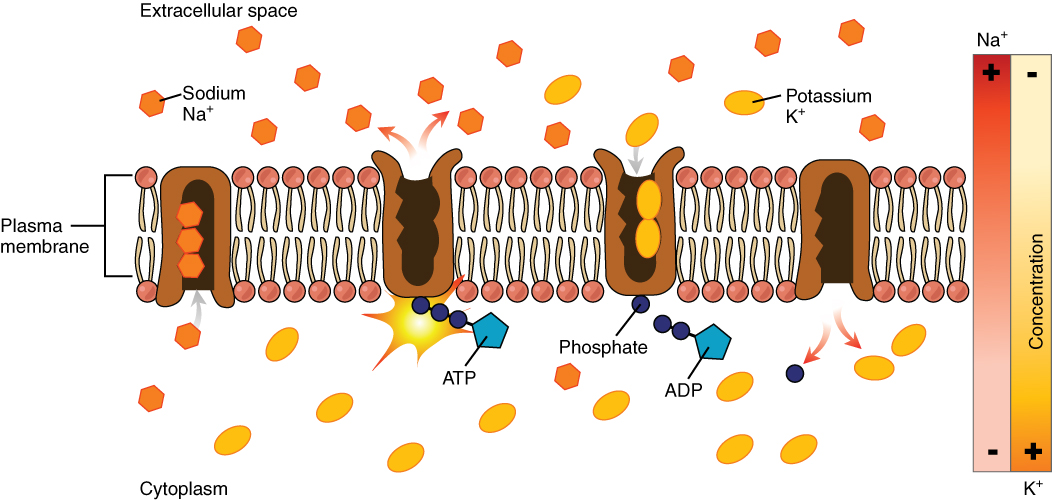
Metaphor III

Figure 6 from Kaunda, Kimambo, & Nielsen (2012)
Neuron at rest permeable to \(K^+\)
- [\(K^+\)] concentration inside >> outside
- Na+/K+ pump moves it in
- Permeable: Permits flow across/through
- Passive \(K^+\) channels open
- \(K^+\) flows out
- Neuron constantly brings \(K^+\) in
Force of diffusion
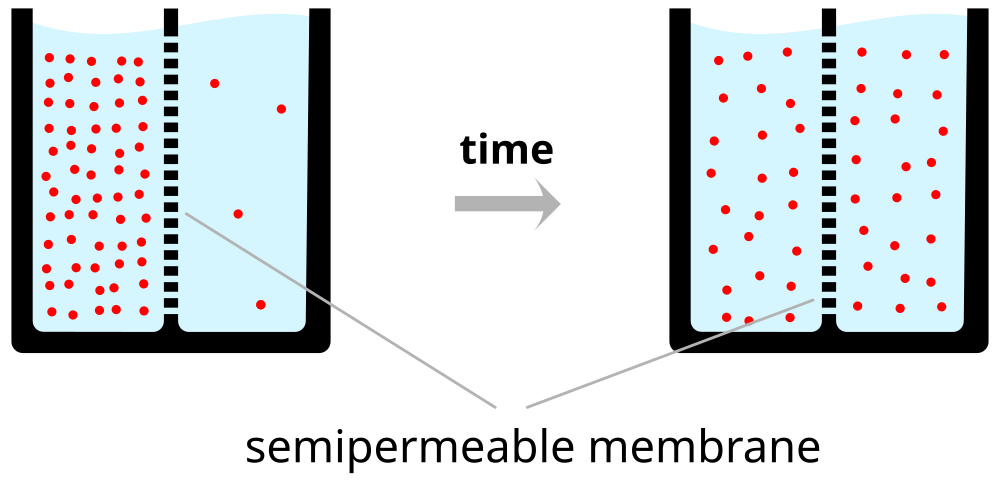
Wikipedia
A practical illustration of the force of diffusion.

- Organic anions (\(A^-\)) too large to move outside of cell
- \(A^-\) and \(K^+\) largely in balance == no net internal charge
- \(K^+\) outflow creates charge separation: \(K^+\) (outside) <-> \(A^-\) (inside)
- Charge separation creates a voltage
- Outside +/inside -
- Voltage build-up stops outflow of \(K^+\)
The resting potential

Balance of forces in the neuron at rest
- Force of diffusion
- \(K^+\) moves from high concentration (inside) to low (outside)
Balance of forces in the neuron at rest
- Electrostatic force
- Voltage build-up stops \(K^+\) outflow
- Specific voltage that stops flow == equilibrium potential for \(K^+\)+
- \(K^+\) positive, so equilibrium potential negative (w/ respect to outside)
- Equilibrium potential close to neuron’s resting potential
Note
In PSYCH 260, we do not emphasize the calculation of equilibrium potentials and the Nernst equation or the Goldman-Hodgkin-Katz equation.
We provide information about this, and the equivalent circuit model, in the next few slides for your reference.
Equilibrium potential
Equilibrium potentials calculated under typical conditions
| Ion | [inside] | [outside] | Voltage |
|---|---|---|---|
| \(K^+\) | ~150 mM | ~4 mM | ~ -90 mV |
| \(Na^+\) | ~10 mM | ~140 mM | ~ +55-60 mV |
| \(Cl^-\) | ~10 mM | ~110 mM | - 65-80 mV |
- Magnitude and sign of voltage indicates which direction a given ion will “drive” the neuron
Nernst equation

Neuron resting potential ≠ \(K^+\) equilibrium potential
- Resting potential not just due to \(K^+\)
- Other ions flow
- Resting potential == net effects of all ion flows across membrane
Goldman-Hodgkin-Katz equation

\(Na^+\) role
- \(Na^+\) concentrated outside neuron
- Membrane at rest not very permeable to \(Na^+\)
- Some, but not much \(Na^+\) flows in
- \(Na^+\) has equilibrium potential ~ + 60 mV

\(Na^+\) role
- Equilibrium potential is positive (with respect to outside)
- Would need positive interior to keep \(Na^+\) from flowing in

Electrical circuit model

Wikipedia
Summary of forces in neuron at rest
| Ion | Concentration gradient | Force of diffusion | Sign of electrostatic force |
|---|---|---|---|
| \(K^+\) | \([K^+]_{i} >> [K^+]_{o}\) | outward | - |
| \(Na^+\) | \([Na^+]_{i} << [Na^+]_{o}\) | inward | - |
Next time
- Neurophysiology II
Resources
About
This talk was produced using Quarto, using the RStudio Integrated Development Environment (IDE), version 2025.5.1.513.
The source files are in R and R Markdown, then rendered to HTML using the revealJS framework. The HTML slides are hosted in a GitHub repo and served by GitHub pages: https://psu-psychology.github.io/psych-260-2025-fall/
References

PSYCH 260.001 | © Rick Gilmore under CC BY 4.0
